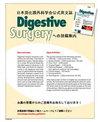INDURG TRIAL PROTOCOL: A RANDOMIZED CONTROLLED TRIAL USING INDOCYANINE GREEN DURING CHOLECYSTECTOMY IN ACUTE CHOLECYSTITIS.
IF 1.8
3区 医学
Q3 GASTROENTEROLOGY & HEPATOLOGY
引用次数: 0
Abstract
INTRODUCTION Laparoscopic cholecystectomy is one of the most common gastrointestinal surgeries, and bile duct injury is one of its main complications. The use of real-time indocyanine green fluorescence cholangiography allows the identification of extrahepatic biliary structures, facilitating the procedure and reducing the risk of bile duct lesions. A better visualization of the bile duct may help to reduce the need for conversion to open surgery, and may also shorten operating time. The main objective of this study is to determine whether the use of indocyanine green is associated with a reduction in operating time in emergency cholecystectomies. Secondary outcomes are the postoperative hospital stay, the correct intraoperative visualization of the Calot's Triangle structures with the administration of indocyanine green, and the intraoperative complications, postoperative complications and morbidity according to the Clavien-Dindo classification. METHODS This is a randomized, prospective, controlled, multicenter trial with patients diagnosed with acute cholecystitis requiring emergency cholecystectomy. The control group will comprise 220 patients undergoing emergency laparoscopic cholecystectomy applying the standard technique. The intervention group will comprise 220 patients also undergoing emergency laparoscopic cholecystectomy for acute cholecystitis with prior administration of indocyanine green. CONCLUSION Due to the lack of published studies on ICG in emergency laparoscopic cholecystectomy, this study may help to establish procedures for its use in the emergency setting.indurg 试验方案:在急性胆囊炎胆囊切除术中使用吲哚菁绿的随机对照试验。
简介腹腔镜胆囊切除术是最常见的胃肠道手术之一,胆管损伤是其主要并发症之一。使用实时吲哚菁绿荧光胆管造影可以识别肝外胆管结构,方便手术并降低胆管损伤的风险。更好地观察胆管有助于减少转为开放手术的需要,也可缩短手术时间。本研究的主要目的是确定吲哚菁绿的使用是否与缩短急诊胆囊切除术的手术时间有关。次要结果包括术后住院时间、使用吲哚青绿术中对卡洛氏三角区结构的正确观察、术中并发症、术后并发症以及根据 Clavien-Dindo 分类的发病率。对照组包括 220 名采用标准技术进行急诊腹腔镜胆囊切除术的患者。干预组包括 220 名同样因急性胆囊炎而接受急诊腹腔镜胆囊切除术的患者,并事先使用吲哚菁绿。
本文章由计算机程序翻译,如有差异,请以英文原文为准。
求助全文
约1分钟内获得全文
求助全文
来源期刊

Digestive Surgery
医学-外科
CiteScore
4.90
自引率
3.70%
发文量
25
审稿时长
3 months
期刊介绍:
''Digestive Surgery'' presents a comprehensive overview in the field of gastrointestinal surgery. Interdisciplinary in scope, the journal keeps the specialist aware of advances in all fields that contribute to improvements in the diagnosis and treatment of gastrointestinal disease. Particular emphasis is given to articles that evaluate not only recent clinical developments, especially clinical trials and technical innovations such as new endoscopic and laparoscopic procedures, but also relevant translational research. Each contribution is carefully aligned with the need of the digestive surgeon. Thus, the journal is an important component of the continuing medical education of surgeons who want their practice to benefit from a familiarity with new knowledge in all its dimensions.
 求助内容:
求助内容: 应助结果提醒方式:
应助结果提醒方式:


